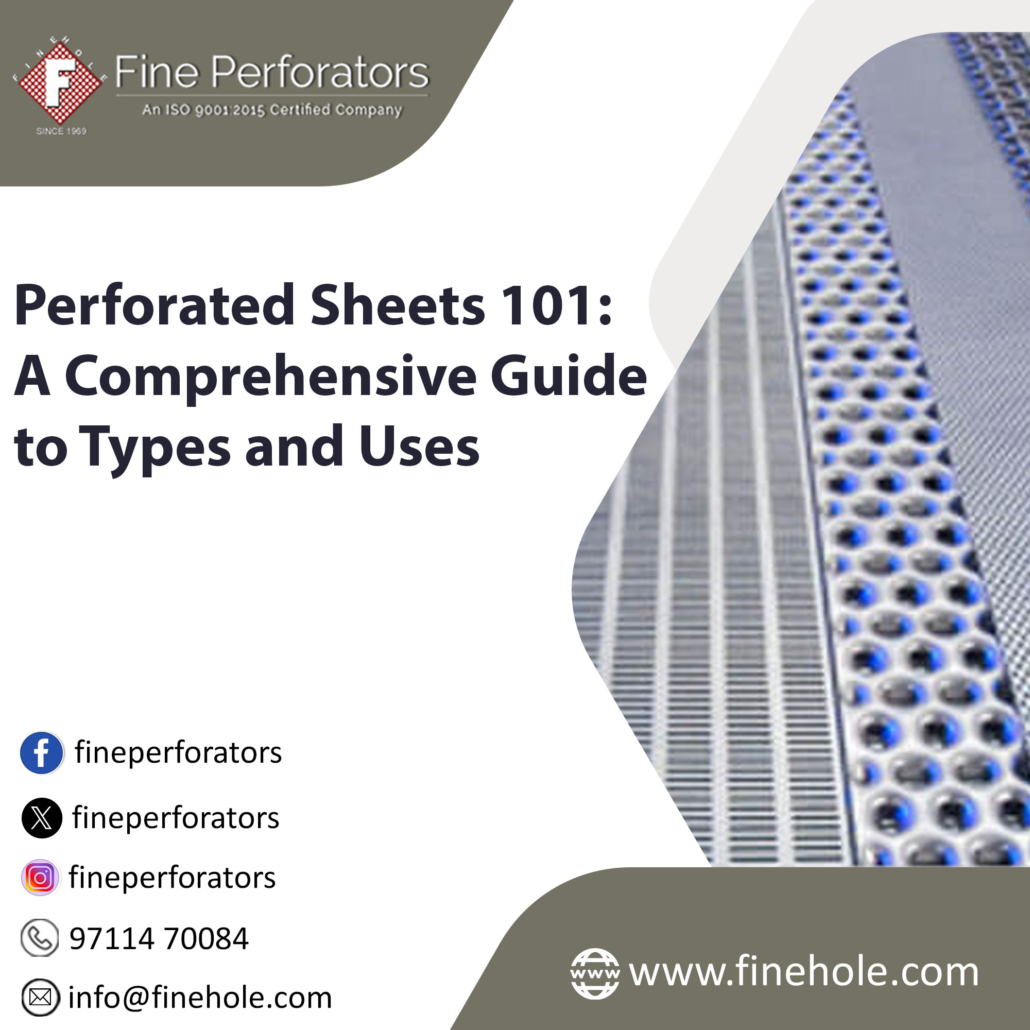Perforated Sheets 101: A Comprehensive Guide to Types and Uses
Perforated sheets, characterized by their array of holes punched through a sheet of material, have become integral in a wide array of industries. From architecture to engineering, these versatile materials offer a mixture of functionality and aesthetic appeal. This article delves into the various applications of perforated sheets and highlights their numerous benefits.

Understanding Perforated Sheets
Perforated sheets are flat materials that have been punched or drilled with a pattern of holes. These sheets can be made from various materials, including metals (such as steel, aluminum, or stainless steel), plastics, and even some composites. The process of perforation involves creating a pattern of holes in a sheet, which can vary in size, shape, and spacing. These patterns are designed based on the intended application, whether it be for ventilation, filtration, or decorative purposes.
Key Characteristics of Perforated Sheets
Perforated sheets are most commonly made from metals due to their strength and durability, but they can also be made from plastics or other materials. The holes in perforated sheets can be arranged in different patterns, such as round, square, rectangular, or custom shapes. The spacing between holes and their size can also be adjusted based on the functional or aesthetic needs. While the thickness of the sheet material can vary, influencing its strength and durability, thicker sheets are generally more robust and suitable for heavier applications. Perforated sheets can have painted, anodized, or galvanised finishes to enhance their appearance and protect them from corrosion or other environmental factors.
Benefits of Perforated Sheets
The design possibilities with perforated sheets are nearly limitless. They can be customised to create intricate patterns that serve as visual focal points or subtle accents in various applications. The holes in perforated sheets can also be tailored to specific needs, such as improving airflow, reducing weight, and facilitating drainage. They are typically made from robust materials, which means they can withstand harsh environmental conditions and mechanical stress, making them ideal for both indoor and outdoor applications.
Applications Across Industries
- Architecture and Design: Perforated sheets have found a significant place in architectural design due to their aesthetic and functional properties. They are commonly used in facades, ceilings, and partitions.
- Industrial and Manufacturing: In the industrial sector, perforated sheets are essential for various applications such as screens, filters, and protective covers. They are used in machinery to separate materials, facilitate airflow, and provide a barrier that protects sensitive components.
- Environmental and Safety Applications: Perforated sheets are also utilized in environmental management and safety applications. For instance, they are used in water treatment facilities as filters to remove debris and contaminants.
- Consumer Products: Beyond industrial uses, the uses of perforated sheets are found in everyday consumer products. From kitchen appliances like range hoods to decorative items such as lamps and screens, these sheets offer both functionality and style.
Conclusion
Perforated sheets are more than just functional components; they are a versatile material that blends practicality with aesthetic appeal. Their applications span across industries, demonstrating their broad utility and importance. Whether for their design flexibility or their practical benefits, perforated sheets continue to be a valuable material in numerous fields. Visit Fine Perforators, one of the biggest perforated sheet manufacturers in India, to find the best Perforated sheets that cater your specific needs.


Leave a Reply
Want to join the discussion?Feel free to contribute!